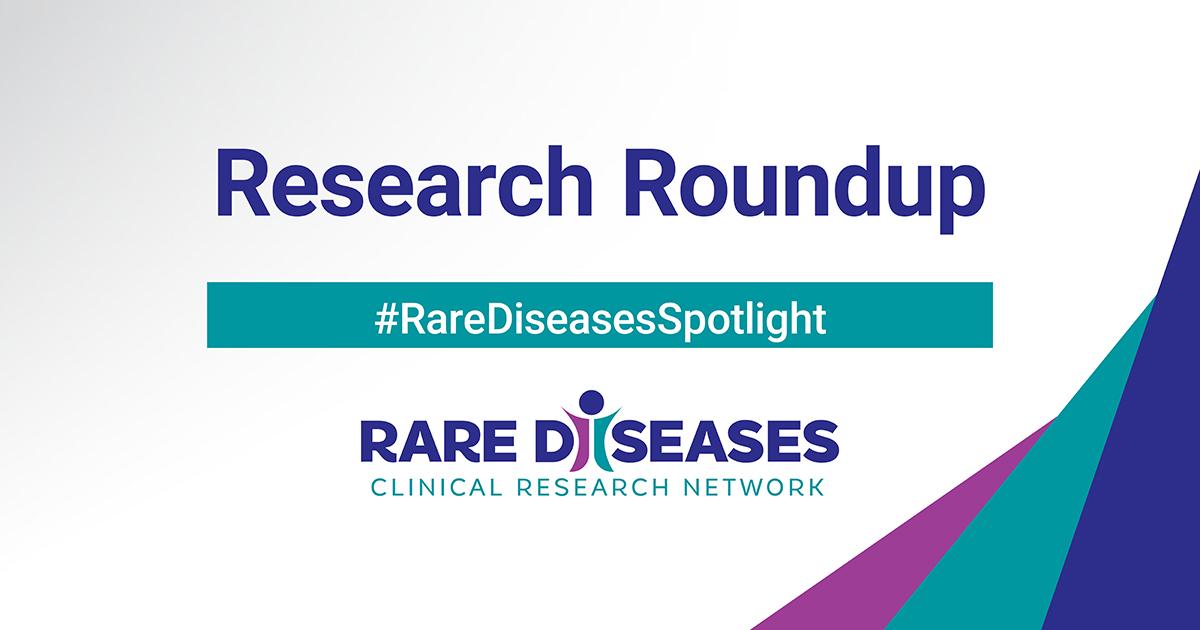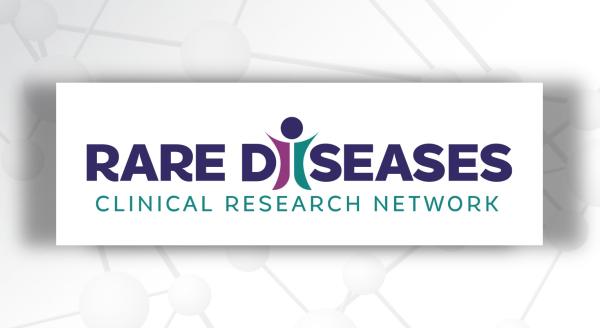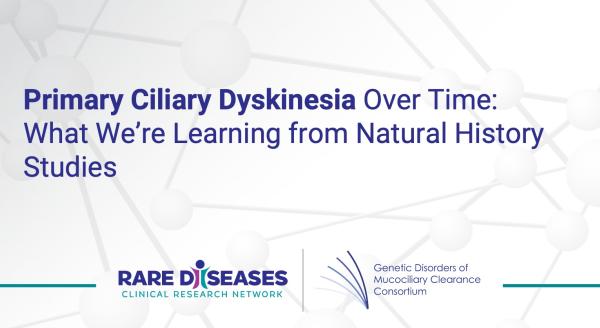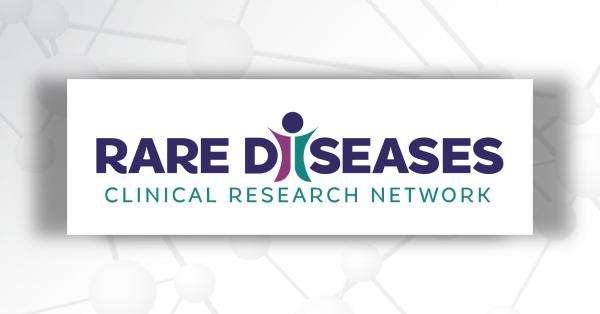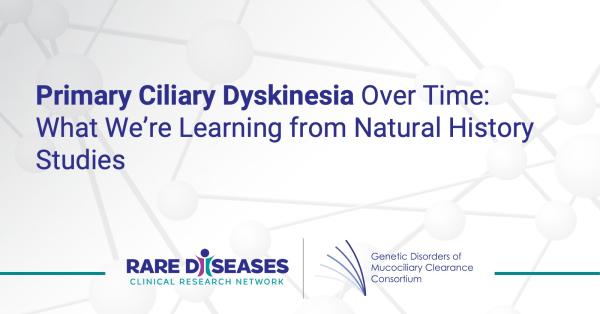Each month, we share summaries of recent Rare Diseases Clinical Research Network (RDCRN) grant-funded publications. Catch up on the latest RDCRN research below.
Jump to:
- Consortium of Eosinophilic Gastrointestinal Disease Researchers (CEGIR)
- Developmental Synaptopathies Consortium (DSC)
- Dystonia Coalition (DC)
- Inherited Neuropathy Consortium (INC)
- Myasthenia Gravis Rare Disease Network (MGNet)
- Primary Immune Deficiency Treatment Consortium (PIDTC)
Consortium of Eosinophilic Gastrointestinal Disease Researchers (CEGIR)
Genetic Study Points to TSPAN12 Role in Fibrosis Development in Eosinophilic Esophagitis
Esosinophilic esophagitis (EoE) is an allergic inflammatory disease characterized by elevated eosinophils (white blood cells) in the esophagus (the tube connecting the mouth to the stomach).
Researchers seeking to better understand the genetic underpinnings of EoE analyzed biopsy tissue from 395 children and adults, including 311 people diagnosed with EoE. About half of the EoE patients studied had fibrostenosis (a build-up of scar-like rings and strictures) in their esophagus, which makes swallowing food much more difficult.
Genetic analyses revealed that when the gene TSPAN12 malfunctions, people with EoE appear more likely to develop esophageal fibrostenosis. The TSPAN12 gene—which helps regulate cell development, growth, and motility—is found in vascular endothelial cells in the esophagus. This gene and cell type had not previously been identified as having an important role in the fibrosis associated with EoE.
Now that a role appears likely, the new findings suggest that a different course of treatment may be needed for this subset of patients with EoE with fibrostenosis.
New Review Paper Examines Eosinophilic Esophagitis
Researchers affiliated with the Consortium of Eosinophilic Gastrointestinal Disease Researchers (CEGIR) have published a new review paper examining eosinophilic esophagitis (EoE), an allergic inflammatory disease.
EoE is characterized by elevated eosinophils (a type of disease-fighting white blood cell) in the esophagus (the tube connecting the mouth to the stomach). It affects an estimated 34.4/100,000 people in Europe and North America, including both children and adults. To diagnose the disease and evaluate treatment efficacy, a doctor inserts a thin, flexible tube with a light and camera at the end through a patient’s mouth, into the stomach, and sometimes into the upper intestine and collects tissue samples.
In this paper, researchers discuss symptoms of the disease along with genetic and environmental factors associated with it. They also examine several current therapies, including proton pump inhibitors, topical steroid preparations, dietary therapy, and endoscopic dilation, and summarize recent systematic reviews of therapy trials.
Developmental Synaptopathies Consortium (DSC)
Although PTEN is a well-established risk gene for autism spectrum disorder (ASD), little is known about how PTEN mutations and associated molecular processes influence neurobehavioral function in mutation carriers with (PTEN-ASD) and without ASD (PTEN no-ASD).
In this study, researchers evaluated the influence of PTEN mutation and ASD diagnostic status on relevant pathway protein levels in peripheral blood. They also examined the associations between protein levels and neurobehavioral functions.
They found that several canonical PTEN pathway molecules appear to influence the presence of ASD and modify neurobehavioral function in PTEN mutation patients. These results show that protein assays of the PTEN pathway may be useful for predicting neurobehavioral outcomes in PTEN patients. The team notes that future longitudinal analyses are needed to replicate these findings and evaluate relationships between protein and neurobehavioral measures.
Study Defines Epilepsy Profiles in Early-Life Tuberous Sclerosis Complex
Tuberous sclerosis complex (TSC) is a multi-system genetic disease that causes benign tumors to grow in vital organs including the brain, kidneys, heart, eyes, lungs, and skin. Epilepsy in TSC typically presents with early onset, multiple seizure types, and intractability. However, this varies among individual patients.
In this study, researchers aimed to define epilepsy profiles in the TSC population. The team prospectively collected detailed individual data on seizure characteristics in children aged zero to 36 months. Caregivers kept daily seizure diaries, including onset and daily counts, for each seizure type. Researchers then compared developmental outcomes at 36 months between subgroups.
Epilepsy was seen in 79 percent of participants. Hierarchical clustering based on six metrics of seizure burden—age of onset, total seizures, ratio of seizure days to nonseizure days, seizures per seizure day, and worst seven- and 30-day stretches—revealed two distinct groups with broadly favorable and unfavorable epilepsy profiles. Within each group, subpopulations showed clinically meaningful differences in seizure burden, and groups with higher burden had worse developmental outcomes at 36 months.
These findings indicate that early and aggressive treatments for epilepsy in TSC may be best leveraged by targeting specific subgroups based on phenotype severity.
Dystonia Coalition (DC)
Review Paper Highlights Progress in Treatments for Rare Movement Disorder
Pantothenate kinase-associated neurodegeneration (PKAN) is a rare autosomal recessive neurogenetic disorder in which specific regions of the central nervous system progressively degenerate, causing progressive, abnormal, involuntary movements.
PKAN is caused by genetic variants in the PANK2 gene that result in dysfunction in enzyme activity. This disruption allows iron to accumulate in the brain. Increased understanding of the molecular and biochemical mechanisms of the disease has allowed researchers to use these insights to begin designing new therapeutics for the disorder.
Study authors review the results of recent clinical trials and pre-clinical studies of several compounds currently being evaluated. They say that these trials have helped improve trial designs and allowed the development of PKAN-specific measures to monitor outcomes. They conclude that PKAN provides a good model for targeted drug development and clinical trial design for rare disorders.
Adult-onset idiopathic, isolated, focal cervical dystonia (AOIFCD) is a disorder characterized by involuntary muscle contractions that cause repetitive movements or abnormal postures. These movements can be painful and cause considerable disability.
Although patients most commonly present to clinical services due to their motor symptoms, increasing evidence suggests a significant non-motor phenotype to be associated with most forms of dystonia, including AOIFCD. Improved understanding of these non-motor symptoms is needed to better target therapeutic interventions.
In this study, researchers examined non-motor phenotypic features to identify possible AOIFCD subgroups. Non-motor symptoms were assessed in participants with AOIFCD, including psychiatric symptoms, pain, sleep disturbance, and quality of life. To investigate the relationship between these symptoms and determine phenotypic subgroups, researchers used Cluster and Bayesian multiple mixed model phenotype analyses.
They identified two phenotypic subgroups of non-motor symptoms accompanying AOIFCD, with differences in psychiatric symptoms, pain catastrophizing, sleep quality, and quality of life. Researchers say that improved understanding of these symptom groups will enable better targeted pathophysiological investigation and future therapeutic intervention.
Inherited Neuropathy Consortium (INC)
Evaluation of Charcot-Marie-Tooth Assessment Tool Finds Strong Inter-Rater Reliability
Charcot-Marie-Tooth (CMT) is a group of inherited, degenerative disorders affecting the nerves that travel to the feet and hands, causing pain, muscle weakness, and other symptoms. In order to assess disease severity and changes over time, researchers have developed a functional outcome measure called the CMT-FOM. This 13-item clinical outcome assessment tool measures physical ability in adults with Charcot-Marie-Tooth (CMT) disease.
To assess inter-rater reliability of the tool, or the degree to which independent observers using the CMT-FOM agree, researchers trained six evaluators in its use. The evaluators then each used the CMT-FOM separately to evaluate 10 patient participants with genetically diagnosed CMT1A (the most common form of CMT) and their assessments were compared. Results indicated excellent inter-rater reliability.
Researchers conclude that the CMT-FOM is a reliable clinical outcome assessment tool. CMT-FOM is important for natural history and clinical trial studies as it provides an evaluation based on functions that the patient performs in their hands and feet. It also allows a transition from the CMT Pediatric Scale (CMTPedS), a similar instrument for children with CMT.
Researchers have identified a pathway common to several types of axonal peripheral neuropathies (APNs), including multiple forms of Charcot-Marie-Tooth (CMT) disease, and have identified a possible drug target that could help treat the disorder.
The research was led by Robert W. Burgess, PhD, Emily Spaulding, and their team at The Jackson Laboratory in Maine. Researchers with the RDCRN’s Inherited Neuropathies Consortium (INC) contributed by providing patient material to add a human disease component to the team’s efforts. “The serum samples provide by the INC were a way for us to test whether the same mechanisms we found in our mouse models were also involved in patients,” says Burgess, senior author on the study. “As an unexpected bonus, it led to the identification of GDF15 as a possible biomarker, which is being investigated further.”
The study, which was published in Science, was funded in part by the National Institute of Neurological Disorders and Stroke (NINDS), part of the National Institutes of Health, and featured in a recent NIH media advisory.
APNs cause the body’s peripheral nerves to wither and degenerate, which makes them unable to send messages to the muscles or to transmit sensory signals back to the spinal cord. While usually not life-threatening, APNs typically result in some measure of disability.
Genetic studies have shown that many APNs are caused by mutations that affect how proteins are built within cells. Proteins are made by first transcribing the DNA code into messenger RNA (mRNA). The mRNA is then transcribed by transfer RNA (tRNA) molecules that string together amino acids in the proper sequence, like building a train track. The mutations underlying APNs affect the enzymes responsible for adding amino acid blocks to tRNA.
Previous work in flies showed that these mutations inhibit cells’ ability to make proteins. This causes stress within the motor neurons affected by APNs, particularly through a mechanism called the integrated stress response (ISR), ultimately leading to degeneration of nerve structures. Of the proteins previously implicated in the activation of the ISR, one of them, GCN2, had also been connected to defects in protein translation.
Using a mouse model, the researchers looked at APN mice that were also missing GCN2. These mice began to develop symptoms of the disease around two weeks of age, but the disease did not progress much beyond the initial stages. When the APN mice were instead treated with a drug to stop GCN2 from working, they showed improvements in many symptoms.
Researchers Identify New Genetic Cause for Axonal Charcot-Marie-Tooth Disease
Researchers used whole exome sequencing in three unrelated families with axonal Charcot-Marie-Tooth disease (CMT2) to identify a unique pathogenic variant causing CMT with marked upper limb involvement. CMT2 is a group of genetic neuropathies that primarily cause axonal degeneration (damage to the portion of the nerve that carries nerve impulses away from the cell body).
The variant identified is in the CADM family of proteins, which mediate the contact and interaction between axons and the glia (non-neuronal cells that form myelin in the peripheral nervous system and support and protect neurons). The families studied all shared the same private variant in CADM3, Tyr172Cys. Findings were also confirmed in mouse studies.
Researchers conclude that this abnormal axon-glia interaction is a disease-causing mechanism in CMT patients with CADM3 mutations. This is the first example that directly disrupting the interactions between glia and axons is sufficient to cause neuropathy.
Review Paper Examines Gene Identification Efforts, Treatment Strategies for CMT2
In this review paper, two researchers associated with the Inherited Neuropathies Consortium offer an overview of Charcot-Marie-Tooth disease type 2 (CMT2), a group of genetic neuropathies that primarily cause axonal degeneration (damage to the portion of the nerve that carries nerve impulses away from the cell body) rather than demyelination (damage to the protective covering that surrounds nerve fibers). They review gene identification efforts over the past three decades and emerging treatment strategies.
Promising strategies include specific approaches for single forms of neuropathy as well as more general approaches that have the potential to treat multiple types of neuropathy. The INC is particularly pleased because coauthor Brett Andrew McCray, MD, PhD, of Johns Hopkins is a recent INC scholar who was supported by a Career Enhancement Award.
Myasthenia Gravis Rare Disease Network (MGNet)
Study Elucidates Role of IgG-VN-Glyc in Myasthenia Gravis
Myasthenia gravis (MG) is a B cell mediated autoimmune disorder that affects neuromuscular transmission. Patients with MG experience severe muscle weakness and increased fatigability. MG pathology is directly facilitated by IgG isotype autoantibodies.
Diversity of immunoglobin G V regions (IgG-Vs) is critical for immunity. Recently, the presence of N-linked glycosylation of IgG-Vs (IgG-VN-Glyc) has been shown to contribute to diversity. In autoimmune disorders, researchers have observed higher frequencies of IgG-VN-Glyc when compared to healthy individuals.
To test the boarder specificity of elevated IgG-VN-Glyc, MGNet investigators studied patients with distinct subtypes of MG: AChR and MuSK. The investigators focused on examining the B cell repertoire and total IgG, applying complementary sequencing and proteomic-based approaches.
When compared with healthy donors, MGNet investigators found that the frequency of IgG-VN-Glyc motifs was increased in the total B cell receptor (BCR) repertoire of patients with MG. The investigators also found that the fraction of total IgG-VN-Glyc in MG serum is elevated, and the presence of IgG-VN-Glyc did not alter binding of several MG patient-derived monoclonal antibodies (mAbs). These findings contribute to efforts to understand the basic biology of IgG-VN-Glyc and its association with disease.
Primary Immune Deficiency Treatment Consortium (PIDTC)
Severe combined immunodeficiency (SCID) is a group of rare disorders caused by mutations in different genes involved in the development and function of infection-fighting immune cells. Infants with SCID are treated with hematopoietic cell transplantation (HCT, also called bone marrow transplantation or stem cell transplantation) or gene therapy (an experimental form of treatment that uses transfer of genetic material into the cell of a patient to treat or stop disease).
To test parent and patient expectations and experience with these treatments, researchers distributed 151 surveys to families of patients with SCID treated with HCT or gene therapy. They found that 37% of respondents expected the therapy would lead to a “cure” and 43% expected it would last a lifetime. Researchers found that varying interpretations of the word “cure” led to misunderstandings regarding the need for continued medical evaluations and therapies.
They concluded that clear communication about the importance of lifelong follow-up, regardless of treatment outcome, is needed to optimize health and quality of life.
The Rare Diseases Clinical Research Network (RDCRN) is funded by the National Institutes of Health (NIH) and led by the National Center for Advancing Translational Sciences (NCATS) through its Division of Rare Diseases Research Innovation (DRDRI). Now in its fourth five-year funding cycle, RDCRN is a partnership with funding and programmatic support provided by Institutes, Centers, and Offices across NIH, including the National Institute of Neurological Disorders and Stroke, the National Institute of Allergy and Infectious Diseases, the National Institute of Diabetes and Digestive and Kidney Diseases, the Eunice Kennedy Shriver National Institute of Child Health and Human Development, the National Institute of Arthritis and Musculoskeletal and Skin Diseases, the National Heart, Lung, and Blood Institute, the National Institute of Dental and Craniofacial Research, the National Institute of Mental Health, and the Office of Dietary Supplements.

